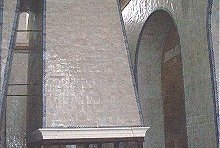
One of my Portuguese favourites, this site is. Two hours by public bus from Lisbon, through continuous rain, took me there.
But the sun started to shine when I arrived in the town of Alcobaça. The Monastery is in the heart of it, so locals are confronted by it every day when they go to the post office or shopping.
While the outside looks massive, the inside is very pretty. I especially lingered in the huge kitchen. This is completely covered with white and blue tiles and has a strangely scaped chimney (see picture above).
Keep reading 0 comments
I enjoyed some wonderful days here. Segovia is a lovely town with a friendly atmosphere. Especially in the evenings when its inhabitants go for an evening stroll in the medieval streets.
Segovia is most famous for its aqueduct. It's really huge and remarkably complete.
What you really shouldn't miss also is the Alcazar, the Castle. Situated at the top of a hill it has a romantic quality. Inside the knights in armour await you.
Keep reading 0 comments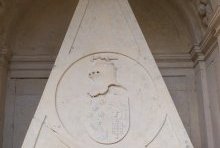
This I found a sight to go really out of your way for. You have to anyway because it's quite a long drive from the major motorway between Lisbon and Porto.
On the outside the complex looks like a massive, fortress-like castle. When you go inside (through a tiny and well-hidden door) the richnesses of the convent come to you.
The major attraction inside, in the church, is the charola, a Romanesque rotunda full of frescoes and gold.
Keep reading 0 comments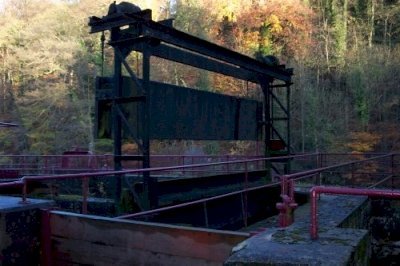
The A6 from Derby to Matlock is the place to go when you want to see the Derwent Valley and its mills. It's a small road that crosses green valleys and passes tiny towns.
I started my tour in Belper, a somewhat larger town with a prominent mill (unfortunately closed today). The first mill I could get into was Cromford Mill. There are now shops and a small exhibition room, there's not much to see otherwise.
Finally, I went to Masson Mills. This is also turned into a shopping center, where you can buy fancy things like golf clubs and towels&soap. But there is more: a large part of the building is now a working textile museum. Here you can see the spinning and experience the noise in the large factory hall.
Keep reading 0 comments
Brühl is a little town near Cologne that is famous for its amusement park 'Phantasialand'. I drove 2,5 hours from my home to see the castles though.
After I arrived I first did a guided tour of the Augustusburg Castle. There I learned about the mighty Clemens August, who ruled a large part of northwestern Germany in the 18th century. One of his hobbies, besides hunting, was building castles. It cost him so much money that after his death all the furniture had to be sold to pay the debts. But the fine rococo palaces are still standing. In Augustusburg you really should see the staircase, by which Clemens August meant to impress the humble visitors that came to see him.
The other castle that is part of this world heritage site, Falkenlust, is being restored at the moment. It's a lot smaller but in nice quiet surroundings. The small chapel in the woods to the right is also very pretty.
Keep reading 0 comments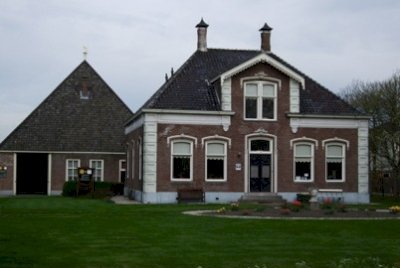
So typical Dutch that it even is not remarkable anymore when you are living there. Flat, very flat, and neatly ordered. The best views of this and other polders in the area are from the air when you prepare for landing at Schiphol Airport.
My first visit was on a dreary Sunday, not the best of times. A good way to explore the Beemster polder is on a bicycle. But beware: the wind can be strong in these open fields!
On my second visit, I tried to find (and photograph) some of the 62 monuments that are included. The village of Middenbeemster is the core area for this: when you park your car near the church, a couple of the monuments are close enough to visit on foot. A little more out of the way is the windmill (under repair) and the Mennonite church. The roads are so narrow here that it's impossible to park.
Keep reading 0 comments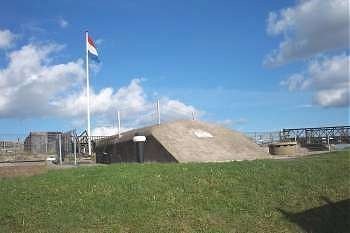
For my visit to the Defense Line, I chose Muiden and Pampus, two of the most accessible locations. Muiden is a historical fortress-town to the east of Amsterdam. The whole town is like an open-air museum and has a real historical feel to it. The Muiden Castle is also a must.
From Muiden I took the ferry to Pampus. This island became the final part of the Defense Line: it had to guard the entrance to Amsterdam via the IJ-river. Soldiers were trained here between the two World Wars, but never has the island been used in combat. The place was already outdated when its construction had finished.
Nowadays Pampus sees 35.000 visitors a year. Since 1990 it has been privately owned by a foundation that wants to maintain and restore the fortress island. They haven't been lucky in finding funds though, and so the site is in really bad repair. Not as bad however as when they acquired it twelve years ago when there were rats everywhere and trees grew out of the buildings.
Keep reading 0 comments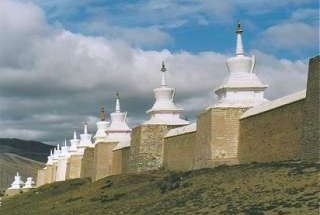
Karakorum nowadays is a small town in the center of Mongolia. There's even a road there from Ulan Bator, one of the few in Mongolia. The town hosts the country's major tourist attraction: Erdene Zuu monastery. So we weren't the only visitors here. The monastery buildings are encircled by a wall of 108 white stupas: just great!
The next day, after staying the night in a comfortable ger camp, we drove on to Tövkin Khid. This is a smaller monastery in the mountains, a few hours from Karakorum. The drive to get there is completely off-road, crossing a river and driving along the paths in the grasslands. This day was undoubtedly the best day of my stay in Mongolia: I wished it would never end. The landscape around here is greener and hillier than in the rest of Central Mongolia, and so pure. We also visited a nomadic family on the move, dismantling their ger with help from their neighbours.
In the Orkhon area you can see quite a number of gers from nomadic families, maybe because of the proximity of a 'big city'. This traditional way of living is still quite common in rural areas, though I wonder for how long. The grasslands are getting drier and drier by the year.
Keep reading 0 comments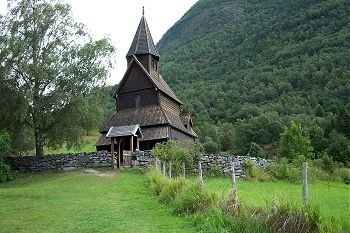
The world heritage sites I like best are those that require some effort to get to. That's also the case with Urnes: a flight, a local bus, a hired car and a small ferry (and 4 hours) took me there.
The Urnes church lies high on the slopes. Because of its relatively small size, it cannot be seen from below. After a steep climb, you are rewarded by this sight that is both very familiar (I've seen lots of pictures) and striking (its almost perfect shape).
Visitors to the site (and they are relatively numerous in summer) can go inside the church with a guide. An explanation is given about its history. That it has been rebuilt several times but that there are some original elements left. And that it is still used as a church, once a month during the summer months.
Keep reading 0 comments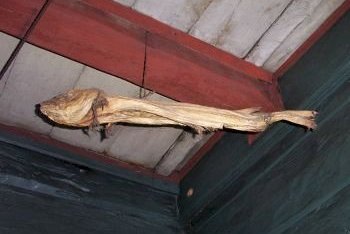
There's not much left of the special wooden houses: during the ages, a large number of them burnt down, and the remaining ones are now mainly used as souvenir shops - open 7 days a week and catering to the American and Japanese visitors, selling trolls and knitted stuff.
For an experience of what has been, there are two must-sees: the Schøtstuene and the Hanseatic Museum. The Schøtstuene is a small wooden building that served as an assembly room for the Hanseatic merchants. They came here to eat, drink, meet and teach their pupils. The dining/meeting hall with its large fireplace is especially worthwhile to take a look at.
The Hanseatic Museum, a few doors away also in a traditional building, shows how a Hanseatic merchant lived in the 18th century. His own rooms were nicely decorated, in contrast to those of the boys that were still in training. They could even be locked up in their beds at night by their supervisor!
Keep reading 0 comments
At the parking lot, I bumped into a bunch of modern Druids. A cross-section of British society (old, young, men, women, white, black) were putting on white gowns that resembled bedsheets. On this day of the year, the 22nd of June, they held their annual rituals at Stonehenge.
Earlier I walked around the ancient stones myself. Well, in the company of at least 150 other people. And with about 50 people staring from behind the fence, not wanting to pay the entrance fee: this is a major tourist destination.
What can I remark about the site itself? It's just like you see in the innumerous pictures that exist of it. A somewhat mysterious circle of prehistoric stone slabs. To get a grip on what you see you'd have to do some serious background reading and imagining.
Keep reading 0 comments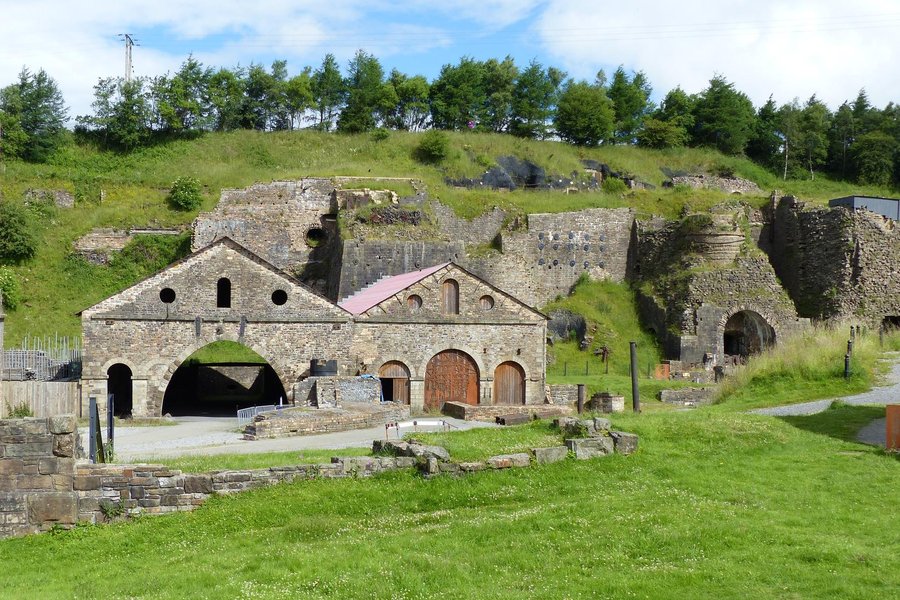
Blaenavon is a small town in the green hills of Wales. The surrounding countryside is a great place for hiking. I went to the old coal mine instead and took the underground tour. The tours at the Big Pit are led by ex-miners and take about an hour.
Before your visit underground, you get a sturdy helmet with a light in front. Off you go then, in the elevator 90 meters downwards. It's dark and cool. Water is dripping. The tunnels you walk in most of the time are just a bit too low to stand upright.
At one moment, our guide asked us to switch our lights off. It became as dark and scary as it can get. To hear that there used to run rats here and that children as young as 7 or 8 were employed under the ground, with no light but the odd candle, makes you really think ...
Keep reading 0 comments
Arriving from Cardiff by train, Bath presents itself as a clean, quiet and green city. The railway station even is called Bath Spa, a double hint to the town's claim to fame.
The Roman Baths lie in the city center, amidst the 21st century shops and restaurants. The baths are now 6 meters below street level: amazing to think how many building generations have passed to add so many new layers of bricks.
Descending to the ground floor where the actual baths are, you pass the elegant Pump Room. This has been the place to taste water from the spa for ages (I didn't). Further down, the museum proudly displays its topclass exhibits, as the almost intact bronze head of Minerva. Finally arriving at the baths you can sit and relax, imagening yourself to be a real Roman.
Keep reading 0 comments
Campo dei Miracoli, Field of Miracles - what a name. But the green lawn in northwestern Pisa, with its marble medieval monuments, does deserve it.
The leaning tower of course is the most famous attraction here. The beauty of the neighbouring 11th-century cathedral and baptistry is stunning though. They make the tower look small, both in size and elegance.
For a steep 15 euro (and some patience) you can do yourself the favour of climbing the tower. It takes about 300 marbles steps to get to the top, where large bells can be found on the edges of the highest platform. When you're on top you can sense that the surface under your feet isn't particularly straight.
Keep reading 0 comments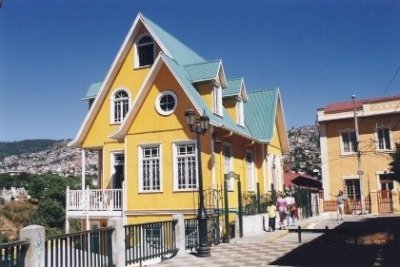
I had heard raving reviews about this city, but it disappointed me at first sight. There is a lot of traffic and smog, and a real town centre is hard to find.
The special thing about this city is the division between its lower and upper parts. Via early 20th century elevators, you can travel between these two worlds. Only about 7 people fit in, and it's quite scary because of the steepness of the hills.
When you arrive in the upper town, a completely different world awaits you: bright colours, artistic buildings, narrow backroads.
Keep reading 0 comments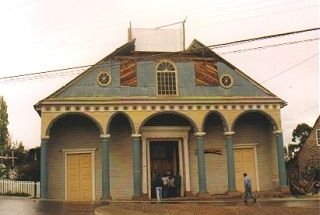
Wasn't it for the World Heritage List, I would never have heard of this place. It's left out often of Chile itineraries. Chiloe is a green island, or actually a number of islands, with a distinct culture and history.
During my Chile trip I stayed in Chiloe for a few days, both in Castro and Ancud, its main towns. I ate a lot of fish in little harbour restaurants. Salmon features prominently on the menu, for about five dollar you can have a delicious meal.
My most precious memories are of the day I spent driving around the islands, looking for old or remarkable churches. I picked up a Czech hitchhiker on the way, who was much better informed about the churches than I. I think we found six that day, in hidden towns at the end of gravel roads.
Keep reading 0 comments
I spent 5 days on Easter Island - making a dream come true. Reading the books by Thor Heyerdahl as a child, I never imagined I would set foot on this remote island. But times have changed in the last 15 years: travelling around the globe has become much easier and cheaper.
As has to be expected, I didn't find a lost paradise here. It's quite an expensive destination, geared to the wealthy western traveller. But I had a fine time here. I walked, cycled and drove around the island. From ahu with or without moai to petroglyph to vulcano. Rapa Nui is an open-air museum in the best sense of the word.
The sight I probably liked best is Tongariki, the ahu with 15 moai in a row. Maybe that's because this was my reward after cycling 2,5 hours on Easter Island's roads that know no shade.
Keep reading 0 comments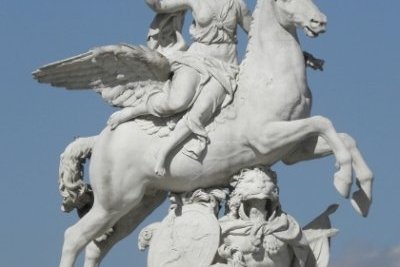
I started my first visit to Paris at the Notre Dame Cathedral. A real surprise when you pop your head up from underground, having used the subway to get to de Ile de la Cité. So this is Paris. I think I'm going to like it here!
To enter nearby Saint-Chapelle I had to queue for about 20 minutes. It's a lovely small chapel, but whether it's worth the EUR 5,49 entrance fee and all the waiting?
In the afternoon I took a boat trip on the Seine. In the time span of an hour you get to see several of the city's highlights from the water, for example, the Pont Neuf, Gare d'Orsay and the Eiffel Tower. It was a cold experience (sitting on the deck while it's nearly freezing), but not to be missed.
Ten years later, I was back in Paris for a second visit. I had some more time to spend: on Saturday I enjoyed two museums (d'Orsay and Guimet), and on Monday I walked the whole WHS-designated stretch along the Banks of the Seine.
It took me 3.5 hours, without getting inside any of the landmark sights I came across. I enjoyed it tremendously: around every corner, there's something pretty or remarkable to see. I saw so many equestrian statues that I think a whole book could be written about them. I had a glimpse into the Grand Palais through an open side door, what an amazing iron/steel/glass construction. I have …
Keep reading 0 comments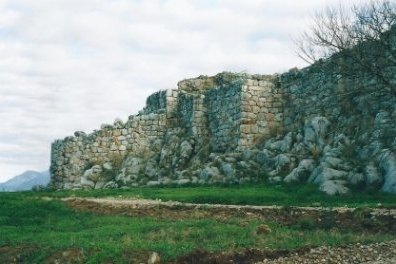
I was in this area on St. Stephens Day, the day after Christmas. All archeological sites would be closed, but I decided to go there anyway (hoping to catch a glimpse from the outside).
The first stop is at Tiryns. Walls, very thick walls, that's what you see. I park my car at the closed entrance and decide to take some pictures from different angles. All solid rock as far as I can see. When I walk away from my car, a little barking dog appears. Those stray dogs are a frequent sight in Greece, and I am not at all happy with that. Five minutes later the little barker is joined by a bigger friend, a German shepherd. They both stand barking and growling between me and my car. No other human being within sight, I walked away to regain courage. A few minutes later I try it again, coming from a different angle. The dogs seem to have forgotten about me so I can sprint to my car. But I got my pictures!
Ancient Mycenae is an hour's drive away. Lovely surroundings this time: brown hills, green olive trees. And those walls again. But the outlaying of a city is recognizable this time. Here an old man keeps guard. A good look from the outside will have to do. The tholos-tombs can be seen from the road: there, in graves shaped like beehives, the Mycenean royalty was buried. I would have liked a closer look at …
Keep reading 0 comments
Mystras is the best thing I saw (so far) in Greece. The city from the Middle Ages is plastered against a mountain near Sparta. It's December, but it looks like fall: brown trees, fresh but chilly air, some dark clouds. The entrance gate to Mystras welcomes you in true medieval style: I knew at once I was going to like it here.
What remains of the city are its churches, a monastery, some walls and roads. The steep, cobbled streets are mostly genuine and give the feeling of actually walking there in the 14th century. The roads were narrow then, so narrow the edges of buildings were removed to leave more space for passers-by. Of course, there were shops then, markets and handicraft businesses. It would be great to be able to time travel on this spot.
The focus points are the Byzantine churches of Mystras. They were restored, both inside and outside. Frescoes, with a lot of dark blue colours, have come to the surface. The red round or octagonal roofs stand out between the now brown and green trees that surround this site. You can only walk around this scenery openmouthed.
Keep reading 0 comments